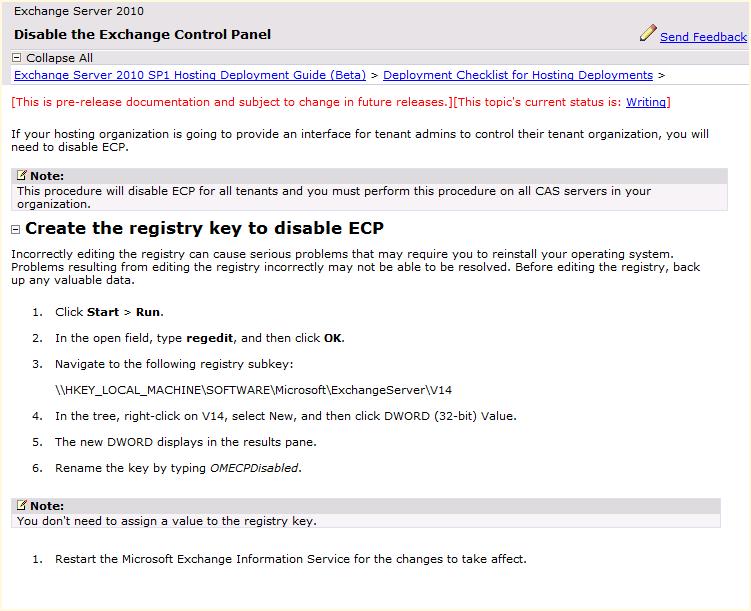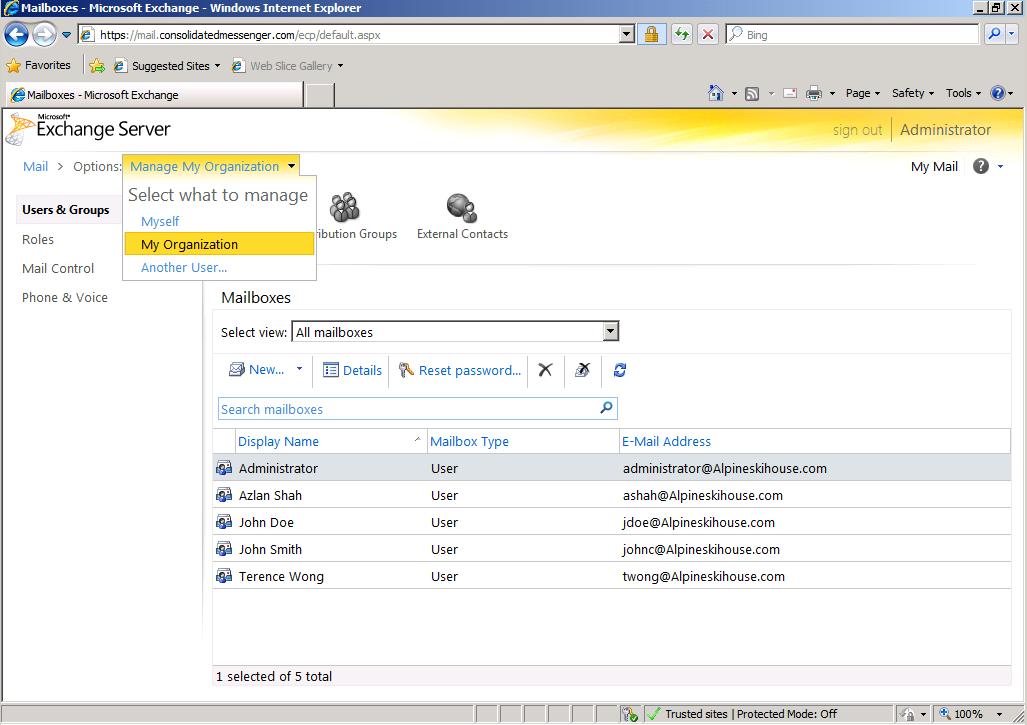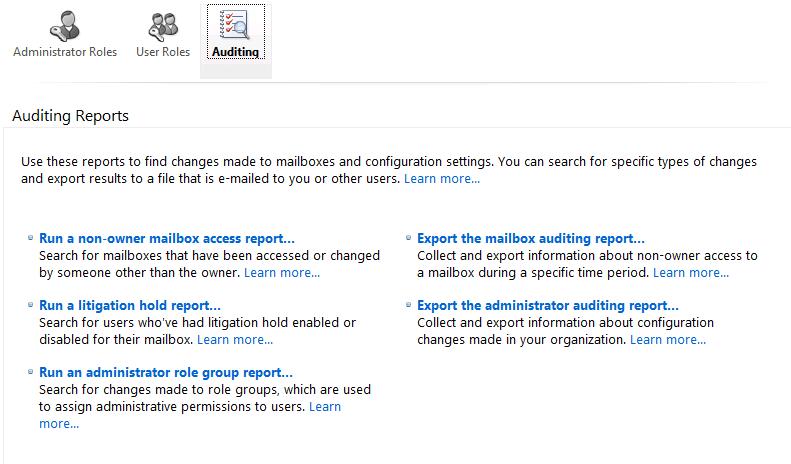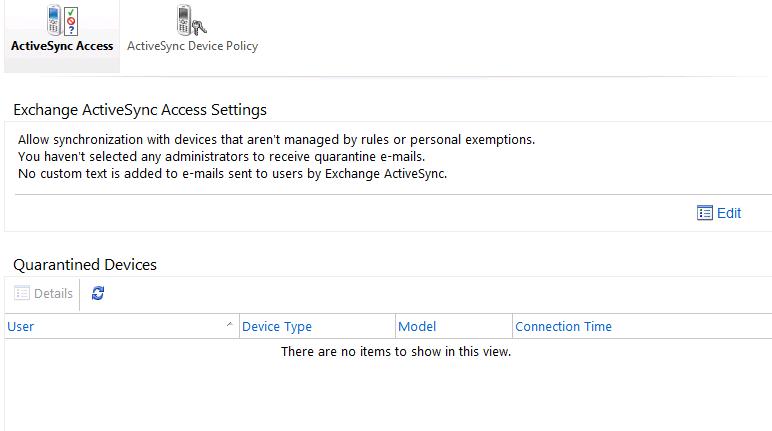Exchange Server 2010 SP1 Beta Hosting Deployment... Part #5 - Exchange Control Panel (ECP) in Hosting Deployment...
When you are doing the Exchange 2010 SP1 Hosting Deployment, one of the sections teaches you how to create a registry key in all the CAS server to fully disable Exchange Control Panel as in the following picture,

So, it said IF your hosting organization is going to provide an interface for tenant admins to control their tenant organization, you will need to disable ECP. They key word here is 'IF'. What it means is that you can use it if you don't intend to provide a custom interface for tenant admins to manage their tenant organization and I have to say, it is more than sufficient to do the job. Of course, there are a few things to be aware of too if you choose to allow this.
So, how do get into it. First thing, of course, you do not put this registry key in, in other word, skip the above step. And once everything has been setup, browse to your CAS and put a ecp at the end. Like the following,
In my case, mail.consolidatedmessenger.com will point to my CAS server, so, my URL will be https://mail.consolidatedmessenger.com/ecp
And like OWA, you will be prompted for login. Login with aTenant Administrator, in my case, I am trying to get into AlpineSkiHouse and manage that, so, I am using AlpineSkiHouse Administrator which is administrator@alpineskihouse.com
You will then be presented with a beautiful Exchange Control Panel like the following,

In this control panel, you can do quite a fair bit of things. Here is a quick list (by no mean the full list),
- It allows you to create, delete and manage mailboxes (including changing password and their attributes like phones and etc.)
- It allows you to create, delete and manage contacts
- It allows you to create, delete and manage groups and membership
- It also allows you to manage Administrator roles and user roles.
- It allows you to generate audit reports such as "Run a non-owner mailbox access report"... which is searches for mailboxes that have been accessed or changed by someone other than the owner.

- Not enough? It allows you to create Rules for your Organization only, such as totally reject mail from certain domain.
- It allows you configure journaling rule.
- It allows you to search mailboxes in your organization for email and messages with specific keywords
- It allows you to look at Delivery Reports to find out if a message been sent out or not.

- It also allows you to manage ActiveSync policy, quarantine devices and etc.

Folks, these are really neat stuff and all these are available out of the box, believe it or not. In other word, in order for your to provide Exchange Hosting, and if you don't want a customized control panel for your tenant organization admins, you really don't need to do a great deal other than having a page to allow them to sign up (I will provide a very simple sign up page for you guys when I have some time, it is really simple to do). In my opinion, I think this is really neat because this is what Outlook.com is using, firstly and secondly, it is part of Exchange and hence you can get support directly from Microsoft.
Of course, there are a few things that you need to be aware of. It may not give you the kind of control that you want and I am currently not aware that Microsoft is opening this up for any customization. So, you may not be able to put your customized policy or the type of package you design. It also does not integrate with your other stuff for example your billing and customer database. Also, if you offer multiple hosting services like OCS, SharePoint, you may want to maintain a good user experience by offering a centralized control panel instead of this one.
However, consider the benefits of using the above ECP, I am sure you folks can think of some clever ways to work around that such as having a script to run nightly to find out if any new user have been created, deleted or modified and hence bill the customer accordingly and etc. So, do explore it, work out the pros and cons as you are planning for your Exchange 2010 SP1 Hosting Deployment and Migration.
Previous Articles
Exchange Server 2010 SP1 Beta Hosting Deployment... Part #1 - The First Look
https://blogs.technet.com/b/provtest/archive/2010/06/25/exchange-server-2010-sp1-beta-hosting-deployment-the-first-look-part-1.aspx
Exchange Server 2010 SP1 Beta Hosting Deployment... Part #2 - Creating New Organization
https://blogs.technet.com/b/provtest/archive/2010/07/08/exchange-server-2010-sp1-beta-hosting-deployment-the-first-look-part-2.aspx
Exchange Server 2010 SP1 Beta Hosting Deployment... Part #3 - Creating New Mailbox
https://blogs.technet.com/b/provtest/archive/2010/07/14/exchange-server-2010-sp1-beta-hosting-deployment-part-3-creating-new-mailbox.aspx
Exchange Server 2010 SP1 Beta Hosting Deployment... Part #4 - Wait wait... are you saying mail contact actually works now? No way!
https://blogs.technet.com/b/provtest/archive/2010/07/16/exchange-server-2010-sp1-beta-hosting-deployment-part-4-wait-wait-are-you-saying-mail-contact-actually-works-now-no-way.aspx
Continue Reading
**
Exchange Server 2010 SP1 Beta Hosting Deployment
https://blogs.technet.com/b/provtest/archive/tags/hosted+exchange+server+2007/